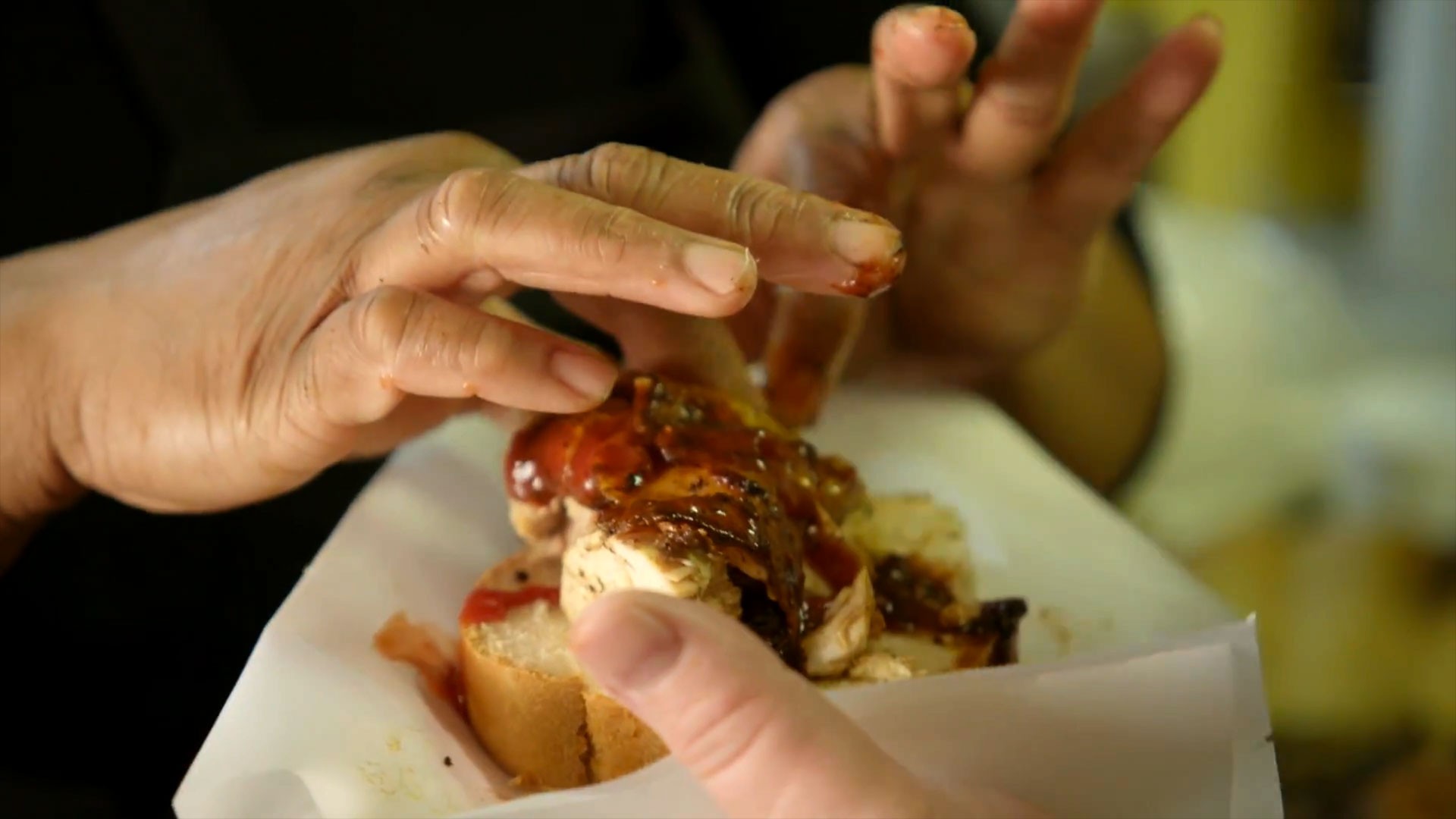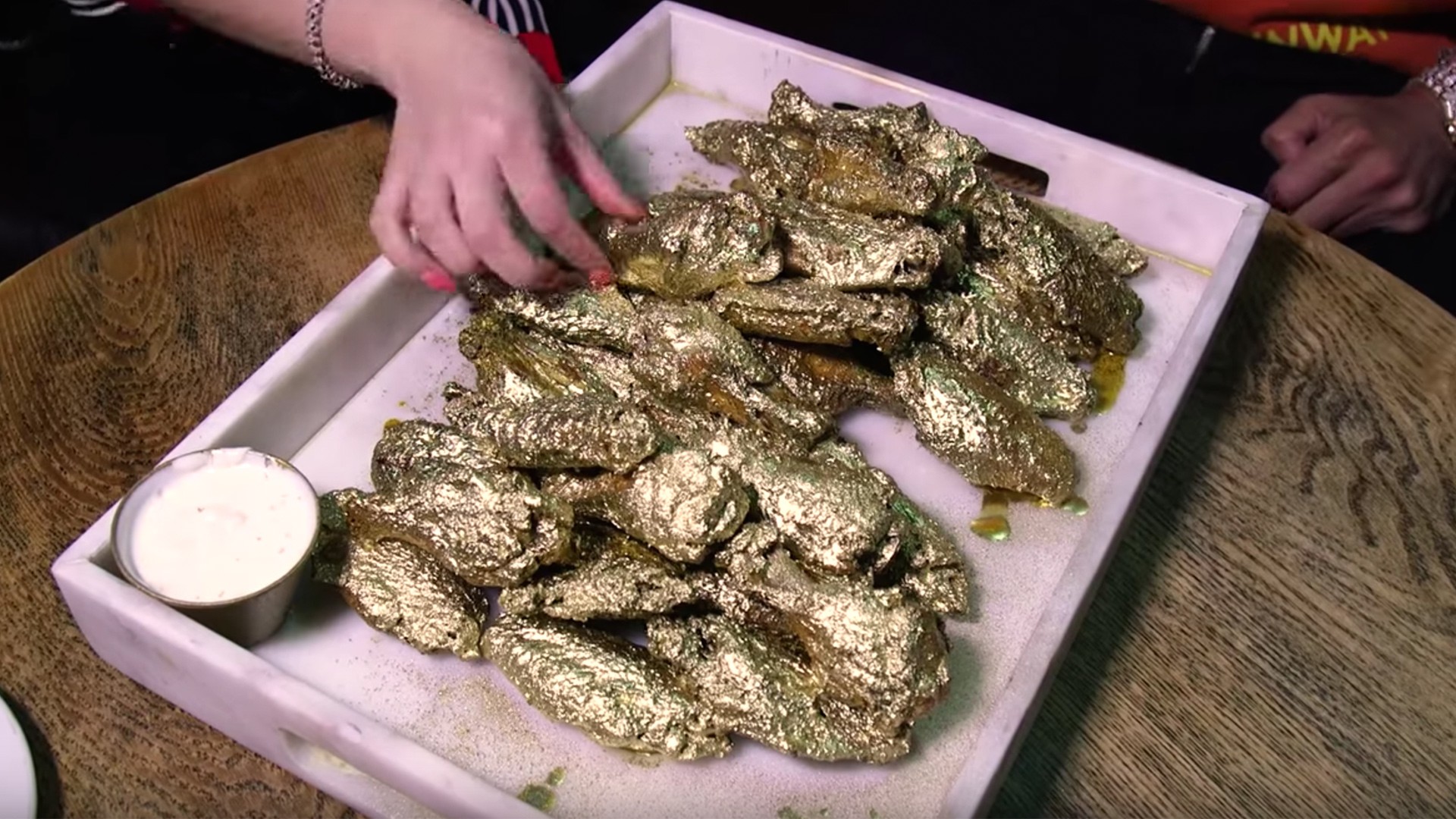Image via Getty
Do you remember where you were the first time you tasted the sting of hot sauce mixed with butter dripping off the deep-fried sides of chicken wings? Do you remember what it felt like the first time you took part in the ceremonial dipping of heavily sauced flats and drumettes into teeny buckets overflowing with blue cheese or ranch? You’re probably thinking I’m romanticizing a cheap dish you can buy at your local dive bar for less than 10 bucks—and make no mistake about it, my friend, I absolutely am.Personally, I’m not only in love with buffalo wings, but also obsessed with the culture that eating chicken wings embodies. “But chicken wings don’t embody a culture,” you’re probably thinking. And to that I respond, “Please finish the article before throwing away my entire lede.” Here’s what I’d like to make clear: the eating of buffalo wings, and chicken wings in general, is not just a passing sports bar indulgence, but a representation of the deeply held beliefs of a collection of people who take part in the practice of greasing up their fingers and hearts with the one thing we all love: chicken wings.Chicken, specifically the fried variety, has always had a bit of a sordid history in American culture. As I started talking to fellow wing enthusiasts, the themes of stereotypes, appropriation, and chicken’s relationship to Black culture came up more than sauce preferences—from DC’s mumbo sauce to Atlanta’s lemon pepper seasoning—did. Some, like me, take pride in the act of eating chicken while being Black. Michael Vann, the owner of New Jersey’s Smitty & Mo’s Chicken Kitchen, told me, “I always thought I would either create something in chicken or barbecue, because as an African-American man who has to live with the stereotype that all Black people eat chicken, why shouldn’t we own something national? Why should KFC and Popeye’s drive the market when we get the stereotypical hit?”Those stereotypical hits keep coming, though, particularly when you dig into the how, what, and why behind the creation story of buffalo wings. In 1980, Calvin Trillin attempted to compile a brief history of buffalo wings for the New Yorker, but ended up with more questions than answers. He noted that, according to most records, Frank Bellissimo, founder of the Anchor Bar in Buffalo, New York invented buffalo wings in 1964. As Bellissimo tells it, he stumbled upon the recipe out of necessary ingenuity after receiving a delivery of wings to his bar instead of the other chicken parts he’d originally ordered. However, that story has been challenged by the last two people you’d suspect to debunk his tale: Bellissimo’s own wife Teressa and their son. Their version of the tangy wing origin story says Teressa saved the drunken day by whipping up sauce-drenched wings for some late-night big-spenders at the family tavern. Much like the best buffalo wing sauce, the plot thickens. It’s important to note that those who collectively share the beliefs, behavior, and spice ingestion that make up buffalo wing culture include but are not limited to gluten-sensitive urban millennials such as myself, or mission-focused restaurateurs, but also affluent, budgetless celebrities who could easily live off filet mignon and lobster on the daily but choose instead to participate in wing worship. When Chrissy Teigen balanced a plate of wings on one butt cheek, I was moved. When model Anna Herrin used her breast as a platform from which to consume wings, I was riveted. So why are those who make up celebrity royalty taking part in the pleasures of peasants? One theory is that they just like wings. Another (perhaps more accurate) theory is that it allows them to act out the “celebrities, they’re just like us!” meme in real time. Eating wings normalizes celebrities, giving them an air of approachableness their daily chef-prepared meals just can’t. Are deep-fried drumsticks the great equalizer? Maybe. Are celebrities knowingly appropriating normie culture? Almost definitely. Do they still take it too far, like when Kim Kardashian's BFF, Jonathan Cheban, smothered them with 24k gold, and sold them for $1000, reminding us that not everything is for the culture? Yes.
It’s important to note that those who collectively share the beliefs, behavior, and spice ingestion that make up buffalo wing culture include but are not limited to gluten-sensitive urban millennials such as myself, or mission-focused restaurateurs, but also affluent, budgetless celebrities who could easily live off filet mignon and lobster on the daily but choose instead to participate in wing worship. When Chrissy Teigen balanced a plate of wings on one butt cheek, I was moved. When model Anna Herrin used her breast as a platform from which to consume wings, I was riveted. So why are those who make up celebrity royalty taking part in the pleasures of peasants? One theory is that they just like wings. Another (perhaps more accurate) theory is that it allows them to act out the “celebrities, they’re just like us!” meme in real time. Eating wings normalizes celebrities, giving them an air of approachableness their daily chef-prepared meals just can’t. Are deep-fried drumsticks the great equalizer? Maybe. Are celebrities knowingly appropriating normie culture? Almost definitely. Do they still take it too far, like when Kim Kardashian's BFF, Jonathan Cheban, smothered them with 24k gold, and sold them for $1000, reminding us that not everything is for the culture? Yes. Speaking of the culture, towards the end of his reporting for The New Yorker, Trillin met a man named John Young who asserted that he was the true inventor of the buffalo wing. Young, a Black man who’d opened a restaurant in Buffalo, John Young’s Wings ‘n Things, in the mid-1960s, told Trillin he’d actually created “mambo sauce” back then, and eating chicken wings was nothing new to Black people.
Speaking of the culture, towards the end of his reporting for The New Yorker, Trillin met a man named John Young who asserted that he was the true inventor of the buffalo wing. Young, a Black man who’d opened a restaurant in Buffalo, John Young’s Wings ‘n Things, in the mid-1960s, told Trillin he’d actually created “mambo sauce” back then, and eating chicken wings was nothing new to Black people.
Advertisement
Advertisement

Advertisement

So, why am I personally so obsessed with buffalo wings? First, it’s the crackling and popping sound of the grease you fry them in that reminds me of my mom making chicken in a cast-iron skillet while I looked on, salivating and waiting impatiently to take a bite, my urgency causing me to burn my tongue. Second, it’s the memory of cheap wing deals that (barely) kept me alive in college, a Wednesday ritual of washing them down with equally inexpensive beer after—and sometimes when skipping—class. Third, it’s the necessarily unrefined and unladylike messiness of their consumption. But my absolute favorite reason to proudly eat buffalo wings is the knowledge that, with every saucy, saturated, ranch-dipped bite, I embrace an act that in the past was used to stereotype and demean Black people such as myself.Those memories, behaviors, and overall experiences are innately part of the Black American experience. Psyche Williams-Forson, chair of American Studies at the University of Maryland, wrote about similar experiences in her book, Cooking Lessons: The Politics of Gender and Food: The Politics of Gender and Food:
Advertisement
Williams-Forson also touches on the contradictions faced when digging into the historically racist assumptions made around Black Americans and chicken consumption as part of the wider culture, specifically when that chicken is fried: “…this narrative and its accompanying stereotypes have produced a paradoxical response from many White people. On the one hand, they want to attribute Black consumption of fried chicken as normative; on the other hand, they want to equate this consumption with something negative. However, the issue becomes more complex when fried chicken—as one of the most heralded foods of the South—is listed among the many contributions of Black folks. At issue here is how to malign Black people and their consumption of fried chicken without crediting them with contributing the method of deep frying to New World Cuisine.”As Young explained to Trillin, the act of eating chicken has a historical thread when it comes to Black Americans. In a 2013 NPR article, Gene Demby interviewed Claire Schmidt, a professor at the University of Missouri, who traced an early iteration of the stereotype to the Klan-lionizing 1915 film Birth of a Nation, specifically a scene in which a Black legislator—one of many shown behaving poorly in a town hall—is depicted eating fried chicken. Schmidt explains that, like watermelon, the way chicken gets eaten makes it a searing commentary on respectability politics. "It's a food you eat with your hands, and therefore it's dirty," Schmidt tells Demby, continuing, "Table manners are a way of determining who is worthy of respect or not."Williams-Forson shared Schmidt’s sentiment, telling MUNCHIES, “There's a longstanding history of African-Americans being stereotyped around chicken. Yes, everybody eats it. Yes, everybody loves it. But African-Americans have had historically a different relationship.” Williams-Forson went on to list the extensive media representation she’d come across linking African-Americans to chicken: greeting cards, art, salt and pepper shakers, ads, even legal statutes. She continued, “as the Nigerian novelist [Chimamanda Adichie] says, if you show people a particular [story] for long enough, they begin to believe it about themselves, and so does society begin to believe it about them.”As I write the close to this piece at the local dive bar I’ve decided to make my office for the day, my fingers still tingling from the wings I just finished as part of my ceremonial approach to prose, I lean into the rebelliousness offered by chicken wing consumption. See, despite their complicated history, racial undertones, being used by celebrities to stunt, and causing my eyes to water on the regular, I’ll always be a strong proponent of buffalo wing culture and all it represents.“My mother always said, ‘Sunday isn't the same without some chicken. You need something you can go back to later on.’ Usually, long after the dishes had been washed, someone would be in the kitchen wrapping a piece of bread around a chicken leg or wing, dousing it with hot sauce, and washing it down with iced tea or Coca-Cola. In the confines of the safe space of home, all stereotypes about Black folks and chicken were forgotten.”